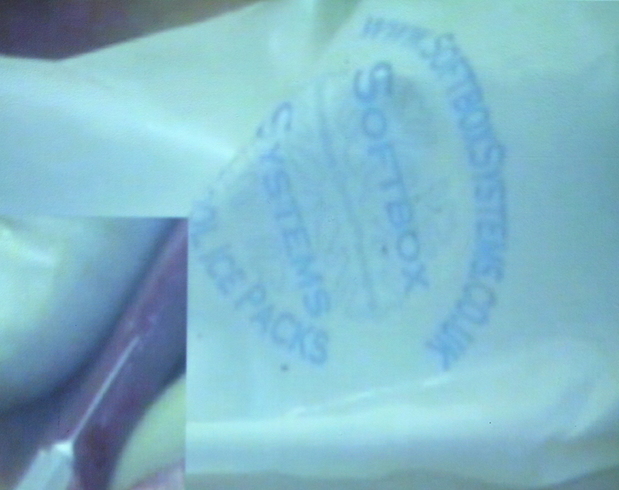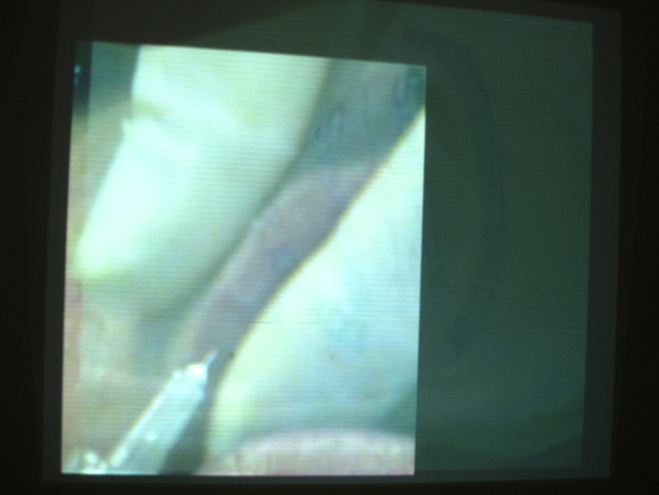Yvonne Jones: (Artist Researcher)
The text for FEINT catalogue . Parts 1: X-cite 2010
Our Unevolved Brains / The Displacementof Artist Researchers / Facing the Posthuman / Feint - X-cite / Feint - The Senses
Have no Future /Blog 2012
The text for FEINT catalogue . Parts 1: X-cite 2010
Our Unevolved Brains / The Displacementof Artist Researchers / Facing the Posthuman / Feint - X-cite / Feint - The Senses
Have no Future /Blog 2012
|
Feint: Catalogue wield / tackle Practice-led research variously emphasises insights revealed by the artist-practitioner, the creative product or the critical process. To fully consider the impact this quest for new knowledge has on the self, others and communities requires a new responsibility on the part of artist-researchers to take up the challenge of theorising their practice… for 'in academe, the artist-researcher cannot hide behind the robe of the mute artist' (Makela and Routarinne 2006b: 25)… It is no longer viable for advocates of practice-led research to merely borrow methods from other fields of inquiry for this denies the intellectual maturity of arts practice as a plausible basis for raising significant theoretical questions and a viable site for undertaking important artistic, cultural and educational inquiries. Graeme Sullivan, Art Practice as Research: Inquiry in Visual Arts. 2010. Sage, London. Part 1 - paper for X-cite (2008) This is a work developed during my PhD (research through art practice) entitled Peeling the Body 2010 http://eprints.soton.ac.uk/165501/ The work is two video projections. Both small-scale images of approximately 14 inches width, both are looped. The scale aids the potency of the imagery in reflecting the real size of the body. The cool colours indicate the idea of a removal from human warmth and a more mechanical way of thinking. The videos are positioned away from, and ideally opposite to, each other creating a 'gateway'. When the viewer turns from one to the other the work evokes a trap for the viewer, who is caught in this enforced viewing of what is clearly not a life saving procedure but a body altering procedure. Each work is overlaid and has cut-into images. In the first video, the image is contained within a hard frame, in the second video the images do not comply to a rigid, hard form frame, they act visually in such a way that each has its own existence but also an existence within the other. The size of the cut-in is different in both, with Fig. 1 having a smaller cut-in than Fig. 2. Both videos have an audio track that, for most of the time, is almost inaudible. At intervals a metallic click is clearly audible. The low sound calls for the viewer to pay close attention in order to hear the majority of the track; this provokes the human to use awareness to focus onto something of choice. The click serves to magnify the procedure, and it is timed to coincide with the movement and withdrawal of the needle. |
|
The click in the video references the intervention of the needle into the corporeal body and evokes experience of a sense of the vulnerability of the body when 'challenged' by a piece of medical equipment.
|
|
Although the separation of the two parts in Fig. 1 is distinct, there is some overlap and visual continuation. This is seen in the directional line of the lip continuing on in the line of the upper edge of the printed text. In this video work, as in the second work, the colour and tone sits comfortably across both sections. The colours differ in the two works. They are cool in Fig.1., Fig. 2 contains more of an overlapping and visual mixing of the two sections, the sections merge visually with one another and the colour is warmer.
The work begs reference to Orlan; however, the comparison is short lived, the works have very different goals. The work raises the question of Stelarc's view of using the body as an adornment; the work leans towards Stelarc’s position but can also be viewed as giving the subject her 'voice', a mouth to speak with. X-cite contains a view of the body today; the body changes shown here are not a particularly extraordinary idea. Not only are add-ons and replacement parts acceptable today so too are, reconditioning, enhancement and body change. There is some notion of a literal posthuman in having extra material put into the body for its own sake, referencing Stelarc and his Stomach Sculpture (1993). This places the project in a position of acknowledging the acceptance and presence of a step in the direction of Moravec. X-cite offers a clearer view than in earlier works on the positioning of subject / object. The movement of the bag in both videos represents the subject; she is visible in her breathing beneath the bag and is the cause of the movement. The subject, as the medical object, is contained in both videos, seen in the cut-in containing the image of the subject body being processed. The video image in Fig.1 evokes a separate existence of the two parts, whereas the parts overlap and visually merge in the image in Fig. 2, presenting a change of positions for the subject as medical object - a position where subject and the medic facilitate a change through engagement with each other, creating a position in which the subject is more empowered. There is an increased sense of a coming together between the subject and the objectifier. Specifically, Fig.2 offers an interpretation of the object being perceived by the objectifier as containing the subject, and a sense that the subject is more able to understand and incorporate how she is also the object. It holds the sense in which the subject / object is disrupted. This visibility allows more clarity for the subject to consider what is beneath her objectified and inscribed existence. The researcher is in partnership with the medic; this allows for video and still image records to be made. The work presents the implanting of non-corporeal material into the corporeal. The idea of a change in the composition of the living human is drawn from the event. Understanding this change, and using distributed cognition, contributes to the continuing movement for the researcher away from a liberal humanist subject towards an emerging posthuman subject, able to question her situation and to see her existence as part of something more than an autonomous unit. With the idea of existing as posthuman comes the realisation that the question of whether or not women are human[1] is becoming less relevant. The content of the work and the studio process continue to demonstrate art practice and use of medical events to consider the implications of notions of the posthuman. The understanding of the subject /object position continues to develop, as do the beginnings of the suggestion of a more empowered subject.
|
|
[1] The question associated with liberal humanism.
[2] This is the view that the body is the original prosthesis. Yvonne Jones 2010 |

